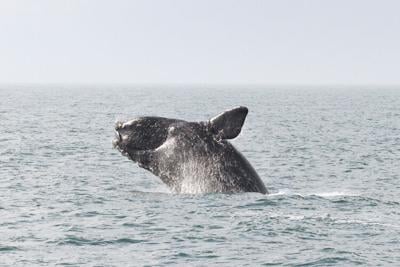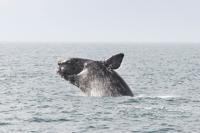DELMARVA - The National Oceanic and Atmospheric Administration (NOAA) Fisheries has published final regulations to establish how much accidental harm is permissible to marine mammals during US Wind’s project construction and operation off Maryland’s coast, as well as how US Wind must mitigate those losses.
US Wind Wind is currently considering installing wind turbine generators off Worcester County, MD, with proposed export cables planned to come ashore on 3Rs Beach in Sussex County, DE.
In January of 2024, US Wind requested a Letter of Authorization from NOAA covering potential negative impacts to small numbers of marine mammals during construction, formally beginning NOAA’s research into how the work would affect wildlife. The issuance of NOAA’s regulations now opens the door for that Letter of Authorization to be issued.
NOAA’s finalized regulations follow the Federal Bureau of Energy Management’s (BOEM) July 2024 release of the project’s expected environmental impacts.
The regulations are written to be in place for 5 years as US Wind’s project is underway, with an adaptive management component included should research on how such construction affects marine mammals change.
Among the wildlife considered in the regulations and that could be impacted during construction and operation of the offshore wind farm are the North Atlantic right whale, humpback whale, orca, bottlenose dolphin, harbor porpoise, and gray seal.
North Atlantic right whales, which pass through the waters off Delmarva on their annual migrations, are considered critically endangered. A recent study found the whales’ numbers have slightly increased, but still face the threat of extinction.
Noting the right whales’ fragile population, NOAA says US Wind’s project impact on the species merits further study and consideration. No serious injury or mortality of the whales is anticipated or authorized under the regulations, according to NOAA.
Among the regulations are required training and coordination of US Wind employees and contractors to be aware and alert for the presence of marine mammals in the construction zone, as well as numerous vessel strike avoidance measures. US Wind will be required to monitor for marine mammals and maintain safe distances from the animals to minimize possible collisions.
North Atlantic right whales, for instance, require a 500 meter separation zone from vessels.
NOAA also goes on to address the possible auditory effects the construction may have on marine mammals.
“Noise abatement devices are not required during HRG surveys as they cannot practicably be employed around a moving survey ship, but US Wind is required to make efforts to minimize source levels by using the lowest energy settings on equipment that has the potential to result in harassment of marine mammals (e.g., boomers) and turning off equipment when not actively surveying,” the regulations read.
NOAA’s full, 196-page report and regulations can be found on the Federal Register.


